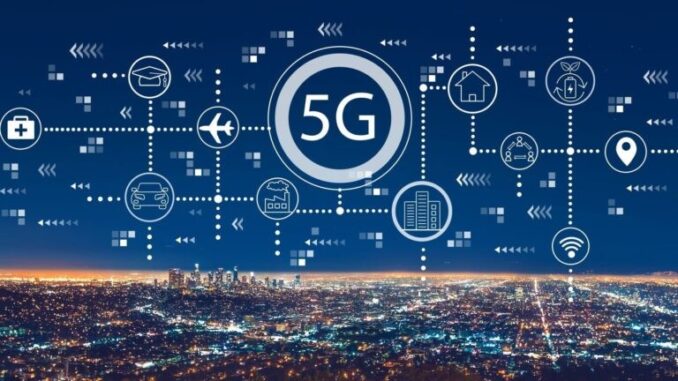
5G technology significantly enhances massive device connectivity, enabling a vast number of devices to connect to the network simultaneously.
This capability is essential for realizing the full potential of the Internet of Things (IoT) and various other applications that require large-scale connectivity.







Here are some key aspects and benefits of massive device connectivity with 5G:
### 1. **Capacity for Device Connections**
– **Support for Millions of Devices:** 5G networks can support up to 1 million devices per square kilometer. This higher capacity is crucial for densely populated urban areas or industrial environments where many devices need to operate simultaneously.
### 2. **Enhanced IoT Applications**
– **Diverse Device Types:** 5G enables a wide range of IoT applications, from smart home devices and wearables to industrial sensors and connected vehicles. This diversity supports smart cities, healthcare monitoring, autonomous systems, agriculture, and more.
– **Real-Time Communication:** The ability to connect numerous devices in real-time allows for seamless data exchange and responsiveness in IoT applications, improving operational efficiency and user experience.
### 3. **Multiple Device Types and Use Cases**
– **Varied Bandwidth Requirements:** 5G accommodates different types of devices based on their specific bandwidth, latency, and reliability requirements. This capability means that low-power devices can operate without affecting the performance of high-bandwidth applications.
– **Support for Massive Machine-Type Communications (mMTC):** 5G is designed for mMTC scenarios, where devices exchange small amounts of data intermittently. This feature allows for efficient communication with many small, low-power sensors, such as those used in smart agriculture or environmental monitoring.
### 4. **Energy Efficiency**
– **Low-Power Options:** Many IoT devices powered by 5G can operate with lower energy consumption. The technology supports protocols such as Narrowband IoT (NB-IoT) and LTE-M, which are optimized for energy-efficient communication.
– **Extended Battery Life:** Devices can communicate less frequently while maintaining connectivity, leading to extended battery life and reduced maintenance costs for battery replacements.
### 5. **Network Slicing for Bandwidth Allocation**
– **Customized Network Segments:** 5G allows for network slicing, where different segments of the network can be allocated specific resources based on the requirements of applications or connected devices. For example, a slice used by emergency services will prioritize reliability and low latency, while another may cater to standard IoT applications that require less bandwidth.
– **Dynamic Resource Management:** Network slicing can dynamically allocate bandwidth and resources according to real-time demand, ensuring optimal performance for diverse applications and minimizing congestion.
### 6. **Improved Reliability and Latency**
– **Ultra-Reliable Low Latency Communication (URLLC):** 5G provides ultra-reliable and low-latency communication for critical applications. This capability is vital for mission-critical IoT devices, such as those used in healthcare services, industrial automation, and autonomous vehicles.
– **Robust Connectivity:** Enhanced reliability reduces packet loss, ensuring consistent device connectivity and reliable data transfer.
### 7. **Seamless Mobility**
– **Support for Mobile IoT Devices:** 5G’s capabilities facilitate the connection of mobile IoT devices, enabling applications such as connected vehicles and mobile health solutions. This seamless mobility is crucial for industries where devices frequently change locations.
– **Consistent User Experience:** Users and devices can seamlessly transition between cells without losing connectivity, providing a consistent experience across varying locations.
### 8. **Scalability in Deployment**
– **Flexible Infrastructure:** 5G networks can be deployed using various infrastructure types (e.g., small cells, macro cells, and fiber optics) to accommodate the increasing demand for connectivity in urban and rural settings.
– **Adaptability to Demand:** The architecture of 5G allows operators to easily scale resources as the number of connected devices increases, providing flexibility in response to market needs.
### 9. **Real-Time Data Analytics**
– **Local Data Processing:** The combination of 5G with edge computing allows for the real-time processing of data generated by connected devices. This capability leads to faster decision-making and enhanced operational efficiency.
– **Actionable Insights:** With massive device connectivity, operators can gather and analyze data from various IoT devices, leading to actionable insights that can improve services, maintenance, and resource planning.
### Conclusion
5G technology’s capacity for massive device connectivity revolutionizes industries and enables a comprehensive ecosystem of connected devices. By supporting millions of devices, providing diverse connectivity options, and enhancing data processing capabilities, 5G lays the foundation for advanced IoT applications and next-generation services. This capability plays a crucial role in creating smarter cities, optimizing industrial operations, enhancing healthcare, and improving overall quality of life. As 5G technology continues to evolve and integrate into various applications, it will unlock new opportunities and innovation across sectors.


Leave a Reply